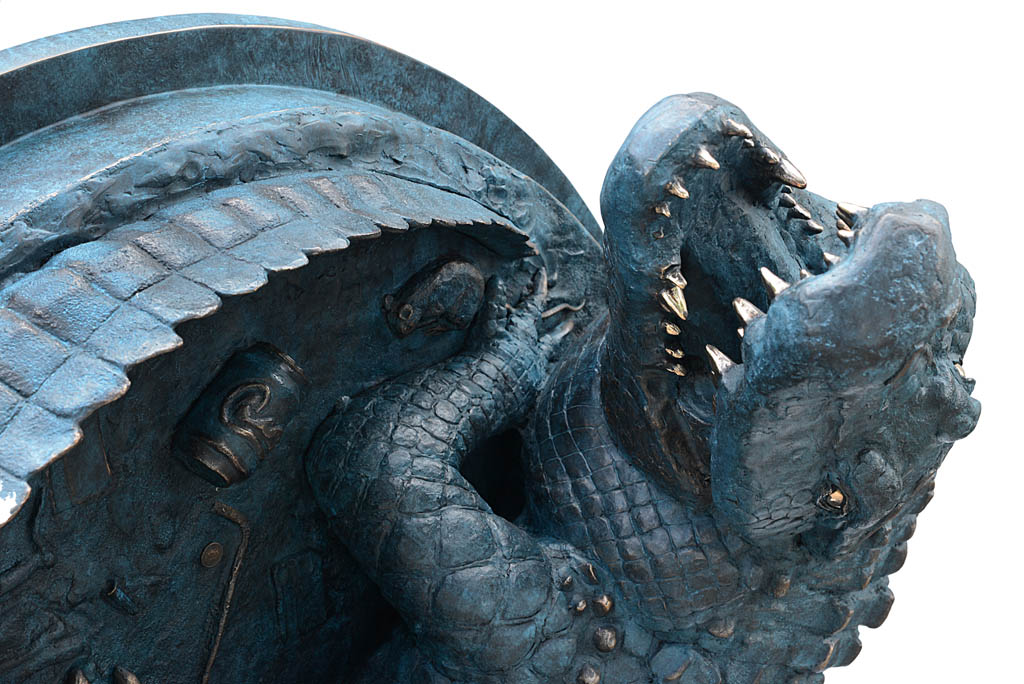
By definition, urban legends are the stuff of modern-day folklore, typically combining secondhand narratives with contemporary settings and familiar objects to tell a tale about an unusual event that many people believe to be true but more often than not isn’t.
These stories tend to become more fantastical with each retelling, but they are inextricably linked to a real and ultimately familiar place that takes on a surreal, somewhat unsettling aura when the legend is shared.
The phrase came into vogue in 1981 with the publication of The Vanishing Hitchhiker: American Urban Legends and Their Meanings by Jan Harold Brunvand. A compendium of America’s best-known urban legends, the headlining tale is about a person traveling in a car, who meets a mysterious hitchhiker. The hitchhiker suddenly vanishes into thin air, leaving the driver with one dead-on conclusion that his erstwhile passenger was a ghost. It has been told in various incarnations since then, but the gist of this supernatural tale remains one of the most popular urban myths of our times.
So too is another foreboding tale that is realistically set in the gritty underground sewers of New York City. For decades, rumors have circulated with the city’s waste waters about baby alligators, once pets of residents who bought them through the mail for $1.50 each, that were summarily flushed down toilets, alive, only to survive and thrive to mega-size, beneath the streets of the city that never sleeps. So popular did this legend become that it provided the basis for a full-length film released in 1980, Alligator, starring a gargantuan man-eating reptile that emerged from a manhole to terrorize the city. Newspapers took up the charge too as live alligators, one as big as 8 feet long, were found in sewers and the East River. The most recent sighting, a lethargic 4-foot beast, was found in Brooklyn’s Prospect Park Lake in February, 2023, keeping the legend very much alive – and real.
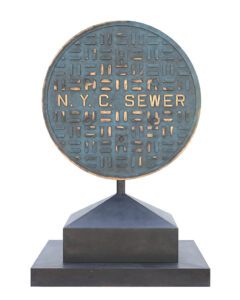
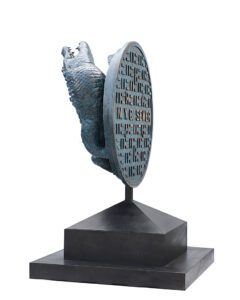
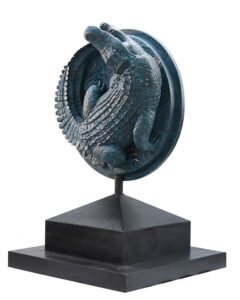
That’s where our own Urban Legend begins, but with a contemporary art-inspired twist. Meet Swedish artist Alexander Klingspor, whose fascination with societal narratives plays out in paintings and sculptures that speak volumes about life in urbanized environments. His most recent piece is a 7+ foot, 1,320-pound bronze alligator that is taking up residence in Manhattan’s Union Square from October 2023 through June 2024. Paying tribute to his love for the city and his fascination with urban myths, N.Y.C. LEGEND, explains the artist, “explores how our past shapes our future through some of our most human traits, such as our unyielding desire to indulge and consume, our innate attractions to myths and legends, and our relentless quest for divine power and control.”
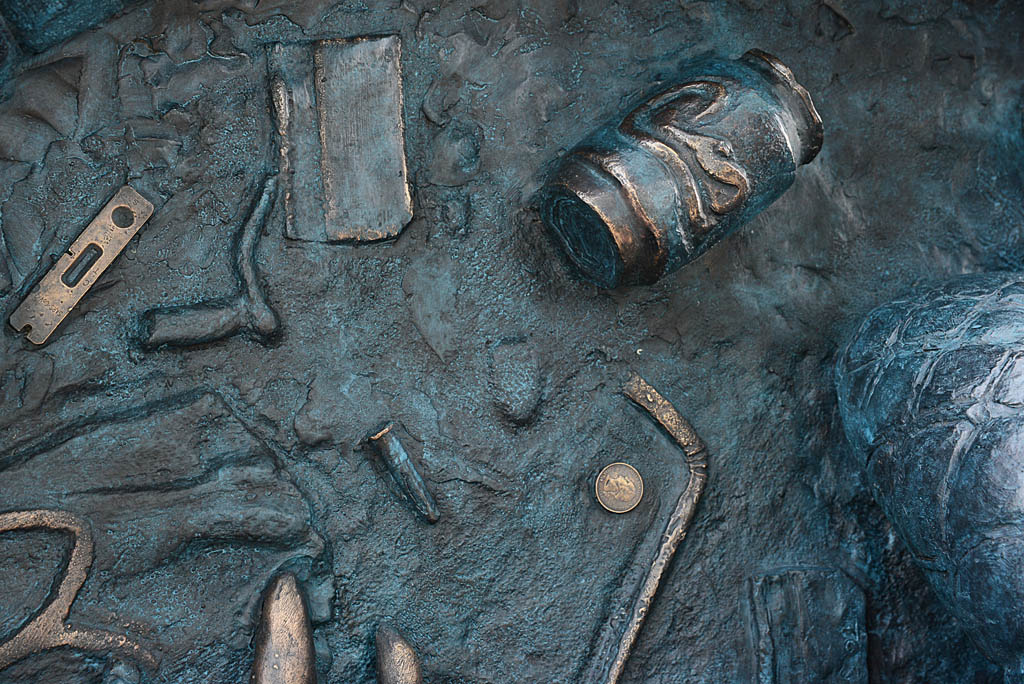
The objects that appear alongside the alligator are all representations of this exact moment in time, and often its precariousness. A simple quarter will soon be a relic of a cashless society, a plastic straw has shifted from an object of convenience to a sign of waste, and fast food and an aluminum can are familiar to us all in their
unnaturalness.
On the lower end of the sculpture, there’s a container for a COVID test, a vestige of what we have recently overcome. The container’s printed biohazard symbol also ties to other stories we tell—from nuclear power to comic book superheroes.
He couldn’t have picked a more apropos and powerful subject than the alligator for his New York installation, paying creative testimony to the artist’s contemplative nature and penchant for mythological symbolism. An armored, adaptable creature that has weathered changing environments untamed and unscathed for millions of years, the alligator leads a parallel existence with the city’s naturally resilient residents who have endured equally challenging times. Both have become a symbol of survival in modern-day lore, a topic that resonates with Alexander Klingspor himself.
His work tends to favor the surreal in mood and media, juxtaposing his real-life experiences with the emotions and thoughts they evoke to form a reflective visual conversation both personal and universal. By his own admission, he is drawn to the idea of consumerism and consumption and is endlessly fascinated by people’s drive to consume.
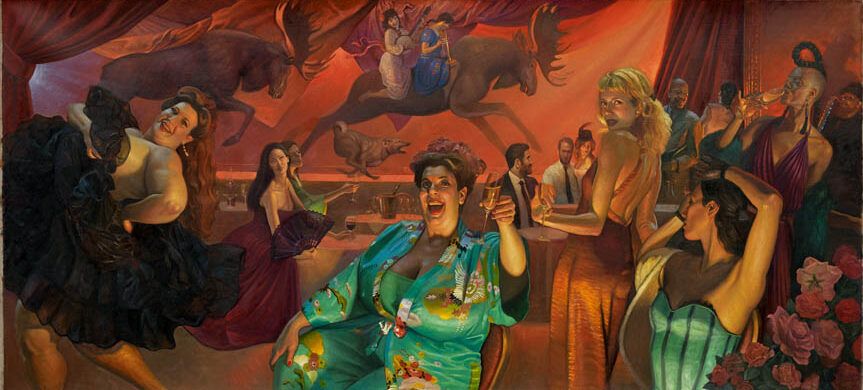
‘Moose Riders’ – Oil on Linen, 240x120cm, 2020
New York City provided rich fodder for his contemplative thoughts, a metropolis he called home for a little more than a decade before moving to London where he now resides. Alexander discovered the burlesque bars and the steamy night life of the Lower East Side during his early years in Manhattan, noting that the city’s neighborhoods were in the midst of changing at that time. He documented the seedy venues and decadent restaurant scenes he saw there, before they were turned into modern condo developments burying their bawdy past. His paintings from this era are reminiscent of the theatrical style of Toulouse Lautrec, and are culturally illuminating. They captivate with demonstrative facial expressions and underlying commentary, evoking the sense of consumerism that so fascinates him.
“When you live in a large city such as New York in a world of such consumerist frenzy–everything becomes a product,” he mused, as he told me the background story for the major work that has now taken up residence in Manhattan’s bustling Union Square.
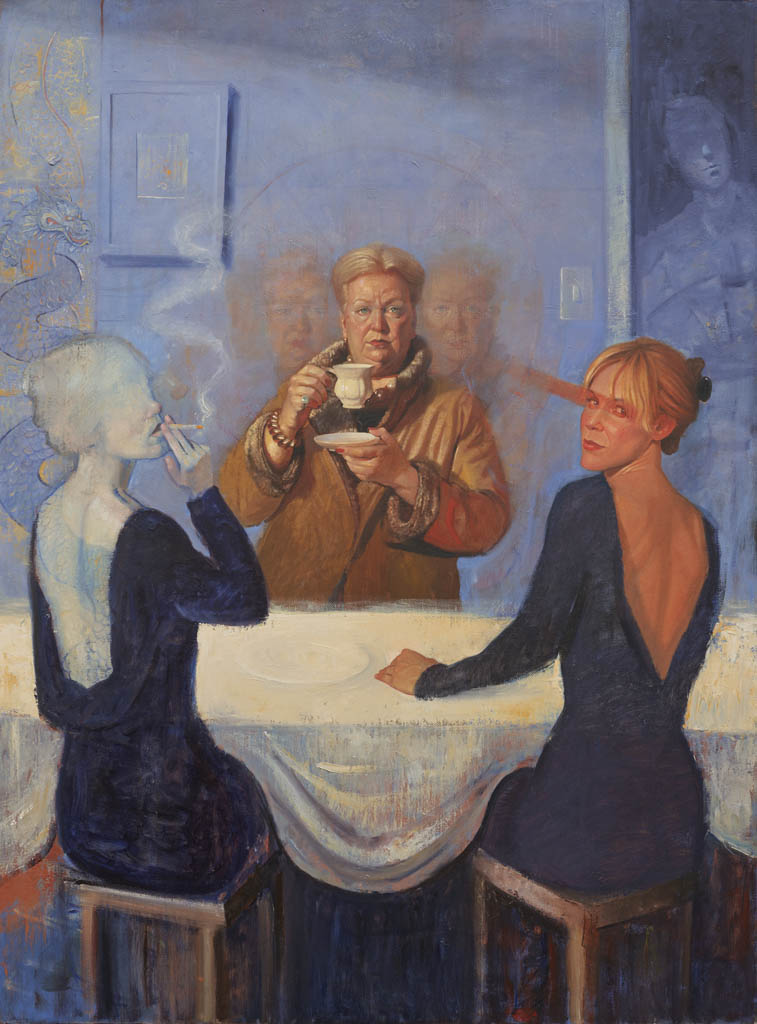
‘Shiva’ – Oil on linen. 60×42 inches. 2021
“I remember when I first moved to New York City. I would be walking down the street or riding my bike and I could smell the garbage and the grit. That’s not a pleasant smell but it didn’t stop me from loving everything about the city. I reflected on this observation, wondering how it affects human beings to be in an urban environment that is manmade. We come from nature originally, and were shaped by nature for a long time. But as we’ve grown into agricultural and industrial societies, we have become basically products of our environment and the city is a perfect example of that.”
Alexander, a native of Stockholm, Sweden, moved to the city in 2008, after refining his artistic skills with a variety of artists, who introduced him to illustration and painting in different genres. He channeled the everyday urban scenes of Edward Hopper when he lived in Kansas City, Missouri, as a youth, studying painting under the tutelage of American illustrator and painter Mark English and his son. Back in Sweden, he mastered the fine detailing of 16th and 17th century painters like Rembrandt when Magnus Bratt, a world-renowned expert in restoring vintage paintings, taught him the realistic narrative styling that so defines his work today.
His parents supported his wish to study art when he was a young child, acknowledging his talent and singular ambition.
“They let me find my own teachers and were always encouraging. My first teacher was Michael Boston, a Swedish illustrator and visionary designer. After working with him for a time, he sent me to America. He told me to call some of his contacts in the United States whom he had studied with. And off I went to America.”
Upon his return to Stockholm a few years later, he started his own company doing illustrations until the business environment for artists like him changed.
“I was forced to look at my own work in a different way. As one of my teachers said, ‘doing illustrations is solving somebody else’s problem. Creating artwork is solving your own problems.”
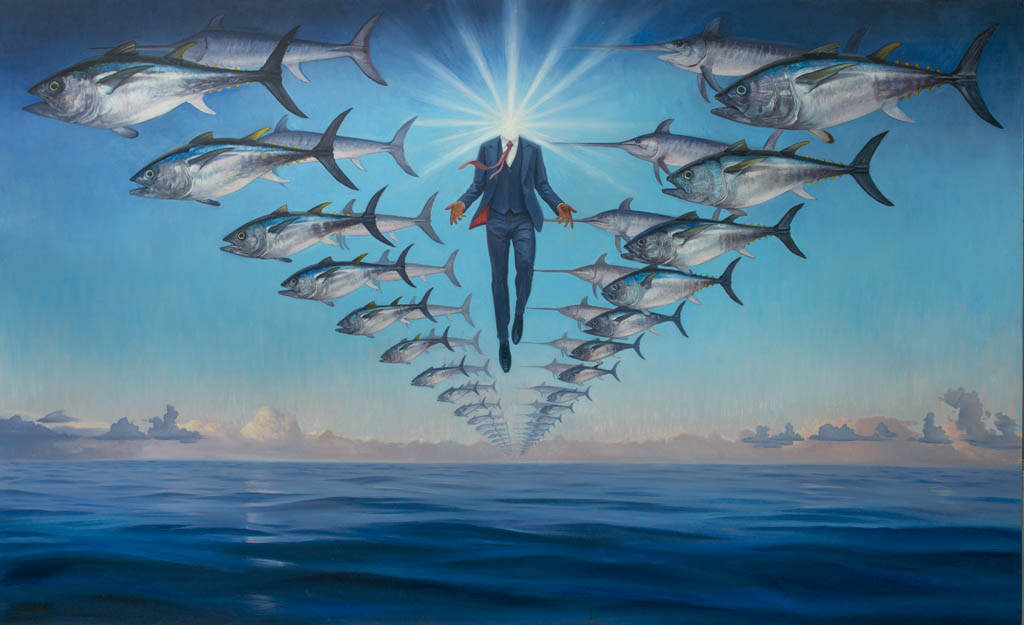
‘Controller’ – Oil on canvas, 200×120 cm, 2021
His interests in various art movements and artists have shifted over time as he tried his hand with different mediums as he set out to create his signature works. During his days in New York City, Alexander also studied structural anatomy part time while pursuing his painting career, enrolling in an Arts Students League of New York course run by noted sculptors Frank Porku and Chris Raccioppi. He spent six years learning and mastering detailed sculptural techniques under their tutelage, but it wasn’t until the year 2020 when he put his new skills to work. Confined to his studio during the COVID pandemic, Alexander had an idea for a sculpture that played off his thoughts about hybrid speciation and urban environments. Hybrid speciation is a scientific term of when two species form a new species, which happens in nature he explained. Alexander wanted to depict a human head merging with the streets of New York. He used imagery from the streets to create the piece, with manhole covers to represent the eyes, a street cone for the nose, garbage and litter covering the forehead, and an alligator climbing out of a larger manhole. Entitled Hybrid Speciation, New York, this piece became the forerunner for the alligator sculpture that is capturing attention today.
Cast in Switzerland at the Perseo Foundry and exhibited through Mollbrinks Gallery, Klingspor’s urban legend is a powerful reminder of how stories shape human civilization through sculptures, paintings and architecture. His uniquely American monster and its ongoing narrative beneath New York’s streets is a testament to the city’s unique character and identity. New Yorkers, by their very nature, epitomize resilience and strength, whether it’s rising from the depths of darkness – think 9/11 – to its standing as a growing powerhouse when other cities are experiencing devastating downturns.
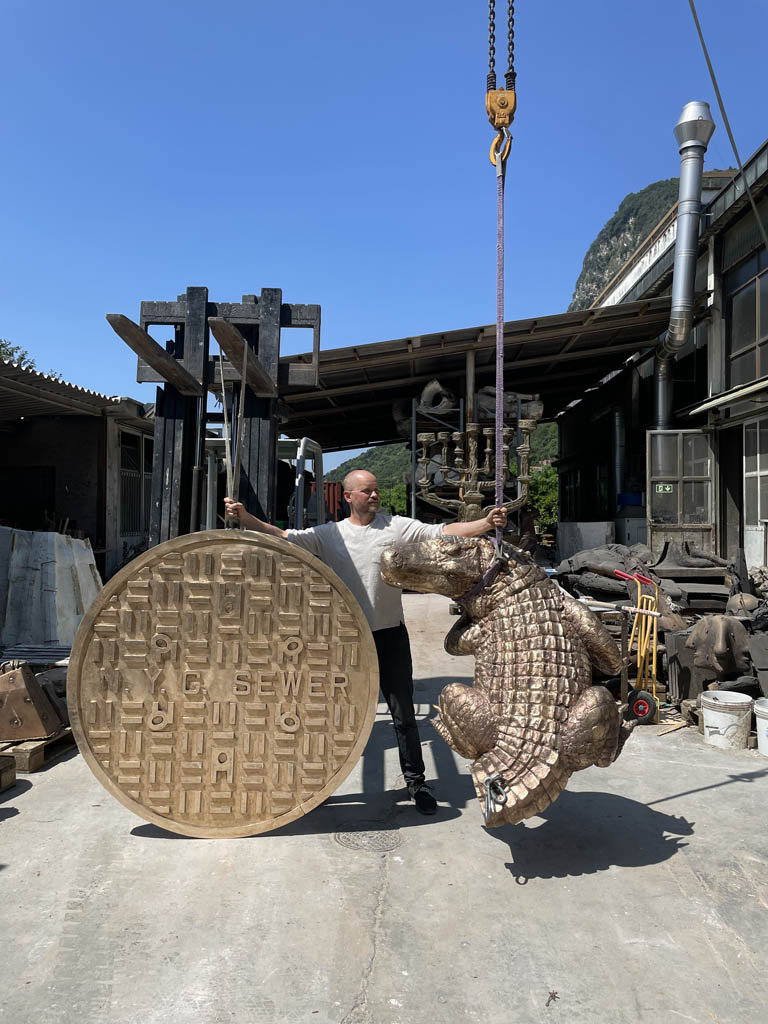
Cast in Switzerland at the Perseo Foundry.
Does he have any plans to create similar pieces in other cities?
“I travel a lot and find it fascinating to find links between older worlds and our world. I think the alligator sculpture is mostly inspired by the former civilizations of Mexico including the Mayans, the Zapotecs and Aztecs. Alligators also tie back to Native American history, especially with the Seminole people of Florida. When I think about the living legends that have stood the test of time in other cities, I feel there are so many possibilities just waiting to be explored.”
He’s not giving away any details of his next legendary project yet, but we are confident that his mind is whirring with ideas. And after seeing what he has accomplished with MONUMENTAL in New York, we believe Alexander Klingspor is becoming an Urban Legend on his own. ☐
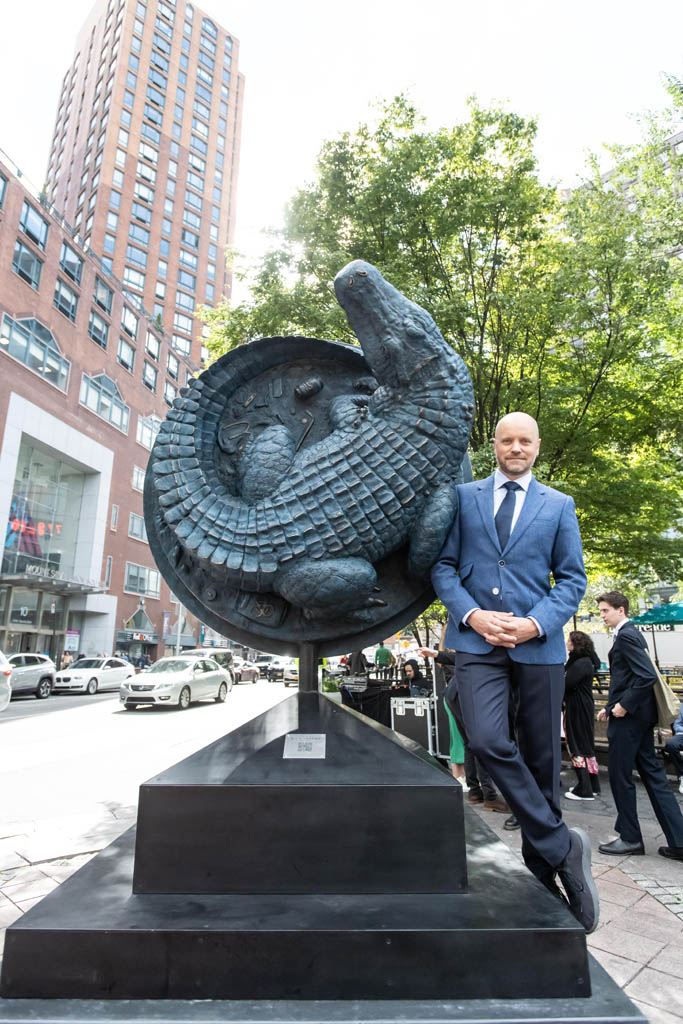
Alexander Klingspore with NYC Legend
About the artist
Alexander Klingspor is accomplished realist painter and sculptor whose work has attracted the attention of art aficionados worldwide, including celebrity Whoopi Goldberg, American art philanthropist Iris Cantor and other prominent collectors who have purchased his work for their private collections. He has held exhibitions in the United States, the United Kingdom and Sweden, among other countries. He is represented by RJD Gallery in the US, Cadogan Fine Arts in the UK, and Mollbrinks Gallery in Sweden. For more information, visit: www.alexanderklingspor.com

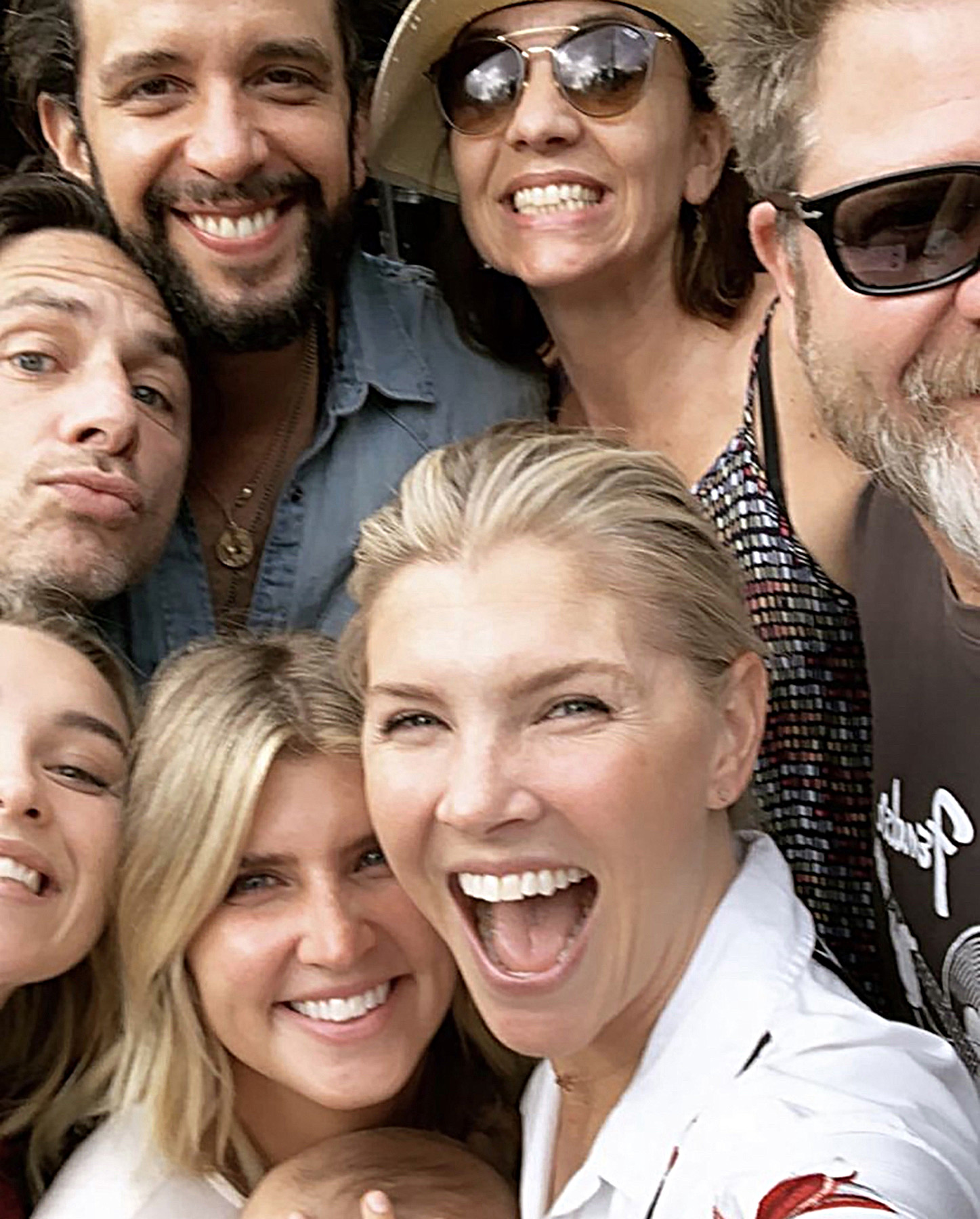
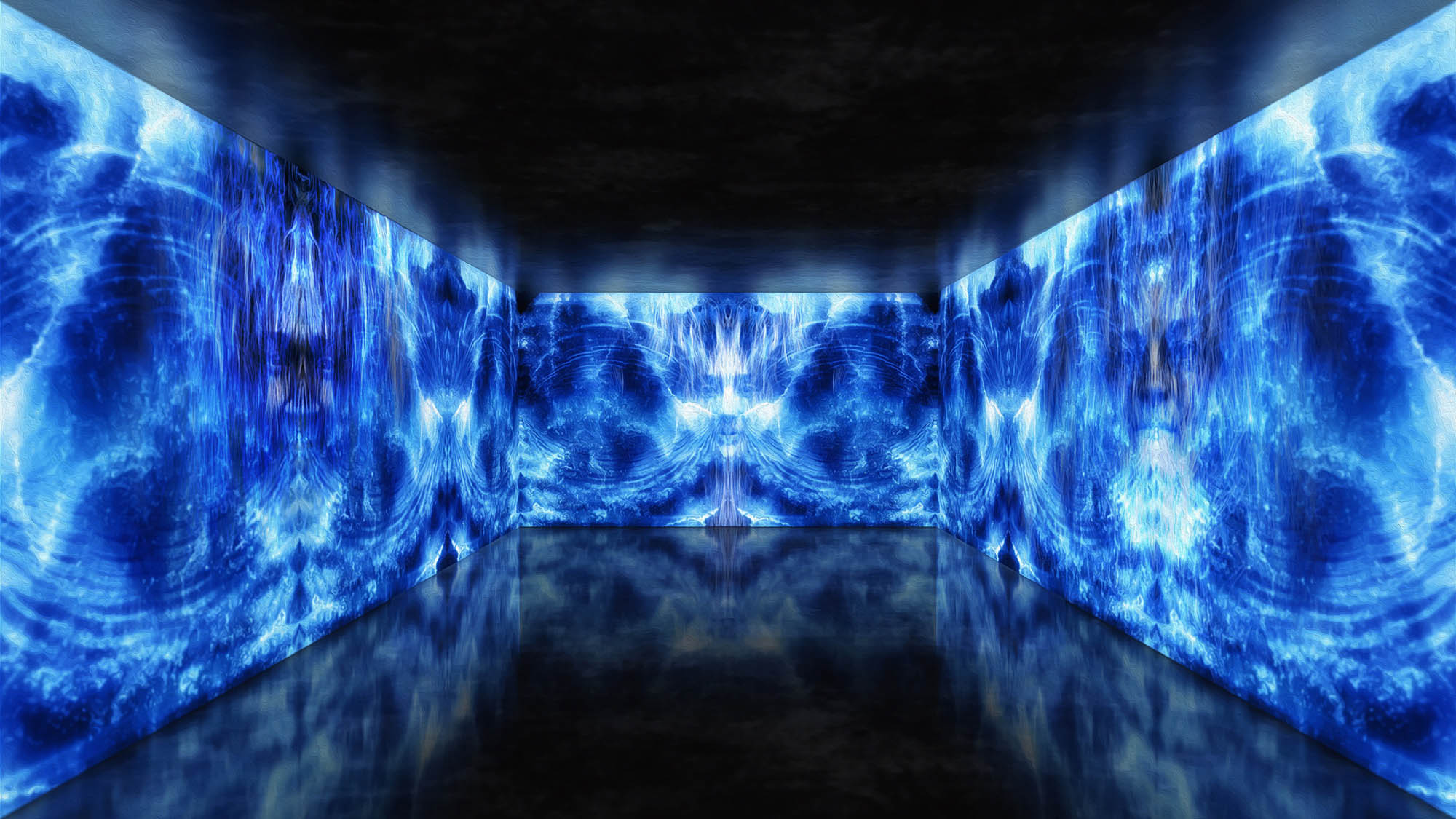
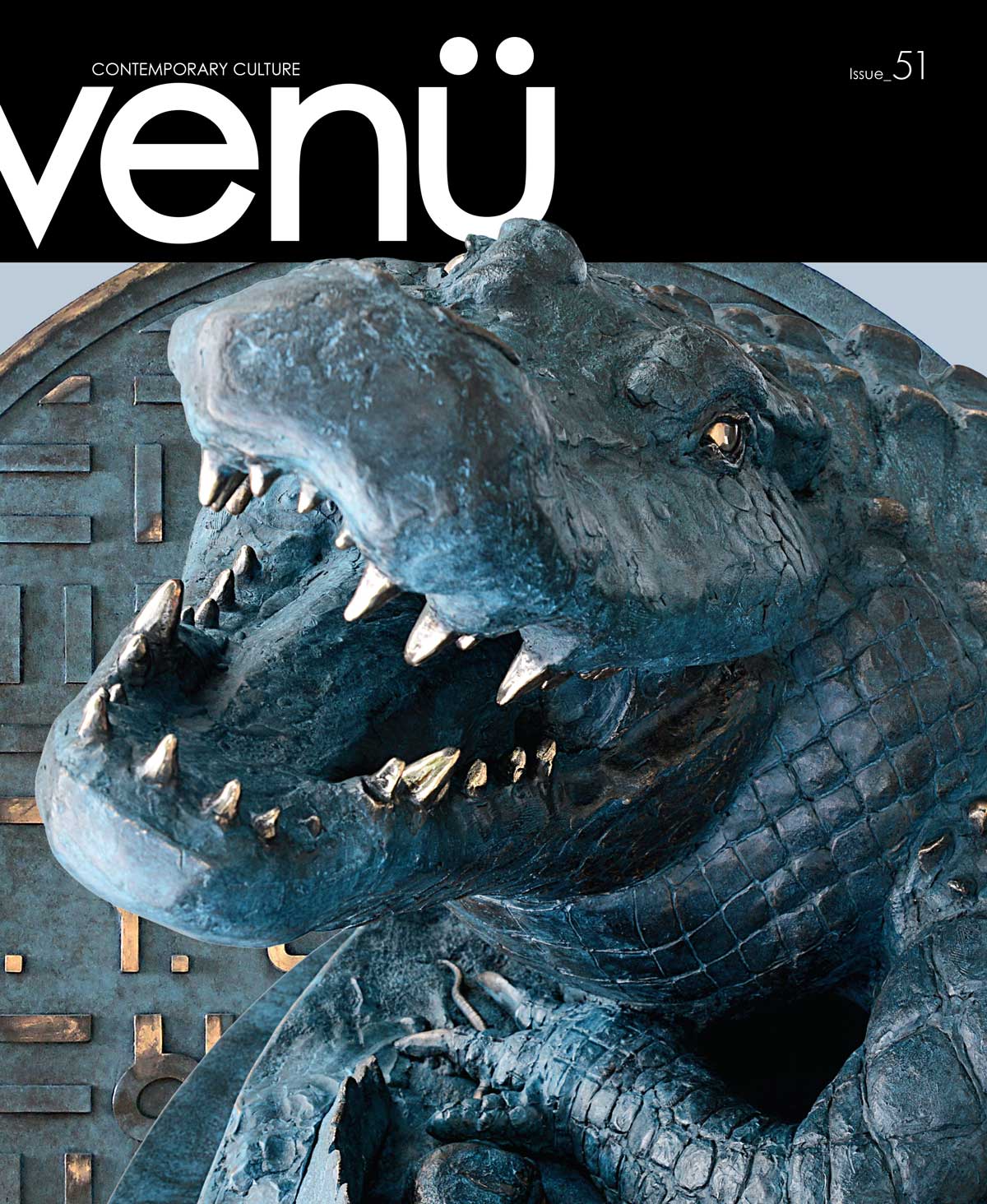
Leave a Reply